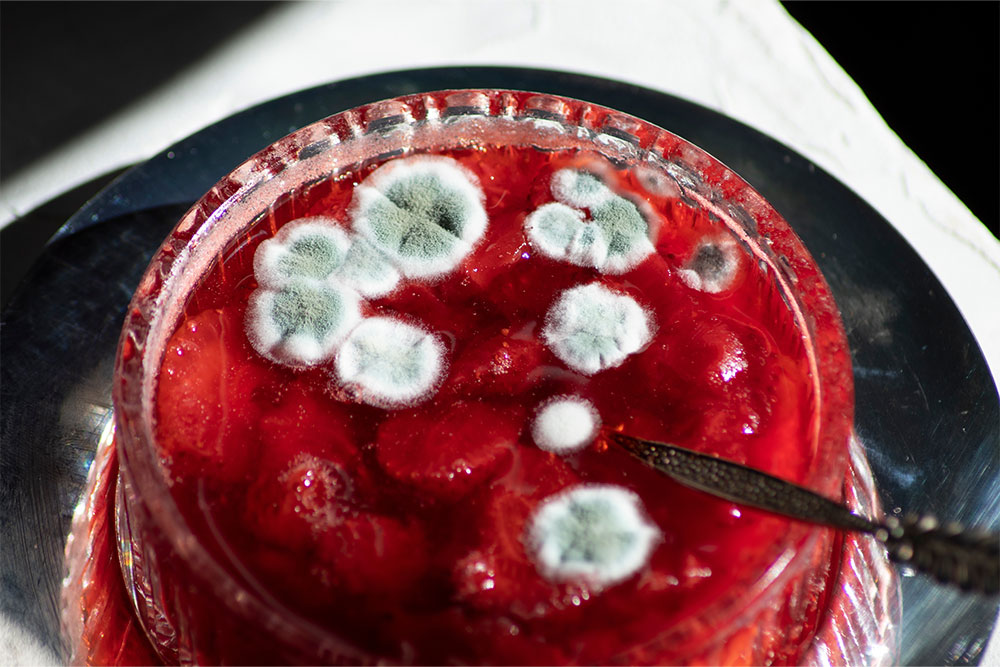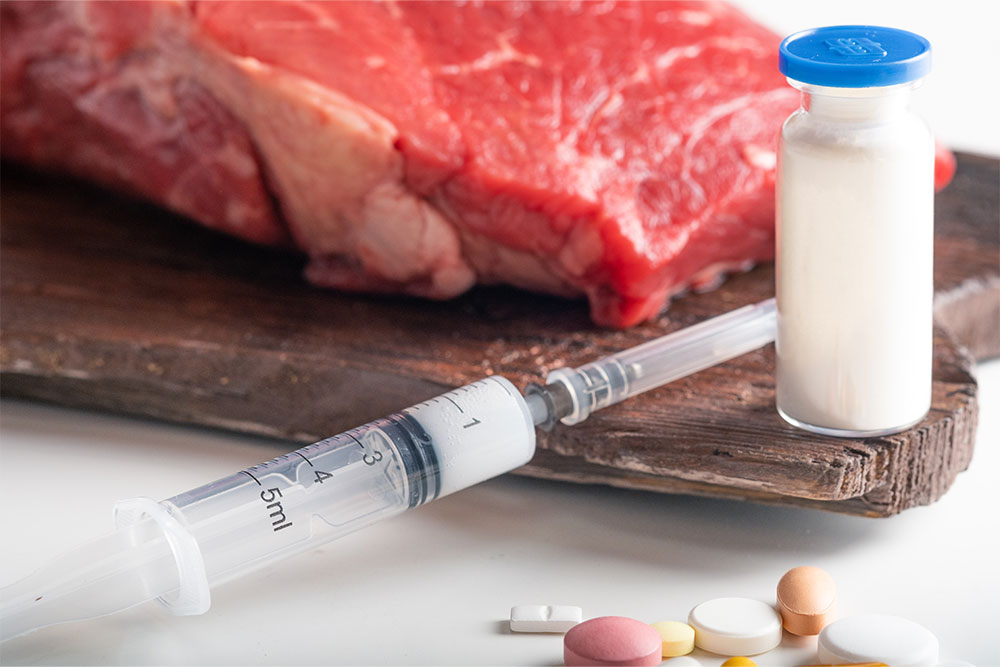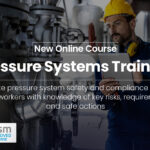
How much time would you spend making a sandwich from scratch? One man apparently spent six months (around £1,200) doing just that. The reason it took so long? He really focused on the ‘from scratch’ part.
He harvested wheat and ground it into flour for the bread, which he obviously baked himself. He even extracted his own salt from seawater for the seasoning. The chicken was butchered by his hands, and every vegetable (lettuce, tomato, onion, dill and more) was grown in his garden.
So, what does this have to do with food safety hazards?
The story of the chicken sandwich ‘from scratch’ is an exception.
Normally, most of what we eat goes through a long journey before it reaches our plate. It probably passes through half a dozen facilities, from farms to factories to delivery hubs, and dozens of workers’ hands throughout the supply chain. Safety guidelines must be followed at every step of that journey to ensure it’s delivered clean, safe, and fit for consumption by the consumer.
Suppose you’re involved in food production or preparation. In that case, you must know how to manage hazards and ensure your produce meets safety standards. You should start by learning the four types of food safety hazards and how to manage them in each supply chain step.
Food Safety Hazards Explained
The Food Safety Agency (FSA), which oversees food safety standards in the UK, defines a food hazard as:
“Something that could make food unsafe or unfit to eat.”
Of course, many things could compromise food safety, with food at risk of contamination during any stage of its production. Producers and manufacturers must anticipate, identify and prevent the many food safety hazards that can cause harm to consumers. Hazards are usually grouped into four categories:
- Biological
- Chemical
- Physical
- Allergenic
The FSA doesn’t recognise allergenic hazards as a distinct category. Instead, it groups allergenic hazards within the chemical category, so you won’t find it listed separately in their guidance.
However, for our guide, we’re breaking the hazards down into four distinct categories. Keeping them separate makes learning about each hazard type and associated control measures easier.

Biological
Biological hazards are caused by microorganisms contaminating food, which can happen at any point in the supply chain as microorganisms are found everywhere.
Biological hazards can be further broken down into the following categories:
- Bacteria (such as salmonella and listeria)
- Viruses (such as norovirus)
- Parasites (such as tapeworms)
- Fungi (such as moulds)
Except for fungi, which cause food to spoil but are often harmless when ingested, these hazards are the most common cause of foodborne illness. The range of illnesses they can cause varies, but all come under the umbrella of food poisoning.
Most of us have had to deal with food poisoning at some point, so we’re aware of the common symptoms. However, more severe cases can be dangerous, particularly for those with weakened or compromised immune systems, such as children or pregnant women.

Common Causes
As microorganisms are everywhere – in the air, soil and livestock – the probability of them coming into contact with food is high. This potential exposure isn’t necessarily an issue if foods are properly handled, stored and cooked before being served. But, any shortcomings in food safety can put consumers at risk.
Cross-contamination is also a danger. Microorganisms can easily be spread from one food to another if workers fail to follow food safety and hygiene guidelines, such as washing hands thoroughly or using separate chopping boards for different foods.
Chemical
Chemical hazards can be either naturally occurring or human-made, added to food by manufacturers or due to an accident. This classification falls into three categories:
- Naturally occurring toxins
- Intentionally added chemicals
- Unintentionally added chemicals
Naturally occurring toxins are generally harmful and are a natural product in many types of food, including peanuts (aflatoxins), shellfish (marine toxins) and vine fruits (ochratoxins).
Manufacturers intentionally add certain chemical substances to food for various reasons – to extend shelf life, improve visual appeal or increase vitamin content. As long as these chemicals are added in the right amounts and under the right conditions, they’re considered safe for consumption.
However, they can be hazardous if they exceed recommended levels.
Chemical additives that make their way into supply chains by accident are more of a cause for concern and can be extremely harmful. Unintentionally added chemical hazards include:
- Agricultural chemicals (such as pesticides or fertilisers)
- Veterinary drugs (such as antibiotics used to treat livestock)
- Pollutants
- Toxic metals (such as lead or mercury)

Common Causes
Naturally occurring chemical hazards are already present in foods, so when they make their way into our diets, it’s because of a failure in the pre-treatment process designed to remove the hazard.
Unnatural chemical hazards are often the result of human error at some point in the supply chain. In a minority of cases, chemical contamination may also result from malicious activity.
Physical
Physical hazards are foreign objects left in or added to our food. Like chemical hazards, they can also be divided between naturally occurring and unnaturally occurring.
Natural physical hazards are generally less of a cause for concern. Common hazards of this type include:
- Fruit seeds, pips and stones
- Bones found in meat or fish
- Soil on root vegetables or salad
- Shell fragments
These hazards are usually present in food from the point of harvest. They can be eliminated or reduced through careful cleaning or handling before cooking. Any foods that potentially contain these hazards should be labelled as such to warn consumers.
Unnatural physical hazards are generally more dangerous. These hazards include:
- Non-organic materials such as glass, plastic or wood chips
- Human hair and fingernails
- Plasters or other dressings
- Animal fur or dander
- Animal droppings
- Animal/insect bodies or body parts
Ingesting these hazards can cause some health issues, including:
- Cuts to the mouth or gums
- Damage to teeth
- Injury to the oesophagus, stomach and intestine
- Choking
Some hazards, such as animal droppings, are a combination of hazard types (chemical and physical), so they may cause foodborne illness rather than physical harm.

Common Causes
Physical hazards innate to certain food products, such as seeds, usually aren’t that dangerous when ingested. This low level of risk means it’s generally up to consumers to deal with these hazards themselves, provided they’ve been warned via adequate labelling on packaging.
More severe physical hazards are usually the result of unsafe harvesting or manufacturing procedures. As with the other hazards, it may just come down to human error, or there may be systemic issues such as:
- Faulty production equipment – This is mainly an issue for ageing or poorly maintained equipment
- Improper food handling – Food workers with insufficient training, protective equipment or poor hygiene may contaminate food during production
- Pests – Insects, rodents and other pests can infest facilities, leaving fur, droppings or other biological material in and around food production or storage areas
Allergenic
Allergenic hazards are foods that may trigger an allergic reaction in an individual with an existing sensitivity to that food. Not every individual suffers from a food allergy, so these hazards aren’t dangerous for everyone – although rates seem to be increasing. The severity of allergic reactions also varies between sufferers depending on the level of exposure and the individual’s level of sensitivity.
However, allergenic hazards should still be taken seriously. Severe allergic reactions (which cause anaphylaxis) can prove fatal, with around 10 people dying yearly in the UK due to food sensitivity, according to the FSA.
You can develop a sensitivity to any food substance, but this doesn’t mean every food counts as an allergenic hazard. In the UK, there are 14 named food allergens that must be labelled as such when sold. These 14 allergens are:
- Celery
- Cereals containing gluten
- Crustaceans (i.e. shellfish such as crabs, prawns and lobsters)
- Eggs
- Fish
- Lupin (a type of legume that’s often used to make flour)
- Milk
- Molluscs (such as mussels or oysters)
- Mustard
- Peanuts
- Sesame
- Soybeans
- Sulphites (when at a concentration above ten parts per million)
- Tree nuts (such as almonds, brazil nuts, cashews, pistachios and walnuts)
Common Causes
Allergenic hazards are usually caused by cross-contact. Cross-contact is similar to cross-contamination, but instead of bacteria being spread between two foods, it’s an allergen.
Cross-contact is often a result of:
- Poor hygiene – Workers who don’t wash their hands thoroughly after handling a named allergen risk spreading it to other foods
- Sharing utensils used to prepare allergenic foods – Utensils used during the preparation of allergenic foods should be labelled and kept separate
- Sharing storage spaces – Storing allergens in the same areas as non-allergens can result in cross-contact
- Accidental cross-contact – Allergens can be mistakenly added to recipes or dishes, which is dangerous even if the allergen is removed before serving
- Accidental serving – Improper labelling, a lack of training or just an honest mistake can lead to an allergen being unknowingly served
Food Safety Hazard Prevention
The FSA outlines the food hygiene and safety standards all businesses in the food industry must follow to prevent food safety hazards.
To achieve the necessary level of food safety, the FSA recommends that all food businesses establish a food safety management system that follows the principles of Hazard Analysis and Critical Control Points (HAACP). This process involves:
- Looking at your current operations to discover potential food safety risks
- Identifying the control points where risks must be eliminated or reduced
- Creating contingency plans in the event a food hazard is not successfully eliminated
- Monitoring food safety procedures to ensure they’re effective
- Maintaining records that show your food safety procedures are working
Every food business is different, so there’s no standard HAACP-based food safety management system. You must identify the hazards specific to your company and decide upon the correct procedures to eliminate or reduce them.
Food Hygiene Training
Establishing a food safety management system is essential to prevent food hazards in your business. But it’s not the only thing you must do to protect your customers (and reputation) from a potential food safety incident.
You might’ve noticed the phrase ‘human error’ come up quite a few times in this guide. Mistakes, caused by either carelessness or a lack of knowledge, often cause cross-contamination or cross-contact incidents, leaving consumers at risk of foodborne illness, injury or allergic reaction.
Training is one of the best ways to prevent these potentially harmful faults. It gives workers critical awareness of food safety and ensures they recognise it as a primary concern. To comply with food safety guidelines, however, training should go beyond basic understanding and include instruction on the proper handling of allergens.
Our online Food Allergen Training course can be the next step in your food safety training programme, giving staff the knowledge to properly handle allergens. Suitable for anyone who serves, handles or prepares food, the course covers the 14 food allergens, including guidelines for working with them.
Training also explains the legal requirements around labelling food allergens and the importance of food hygiene, helping you develop an effective food safety management system that complies with legislation and lets you safely cater to food allergy sufferers.
































































































































































































































































































































































































































































































































































































































































































































































